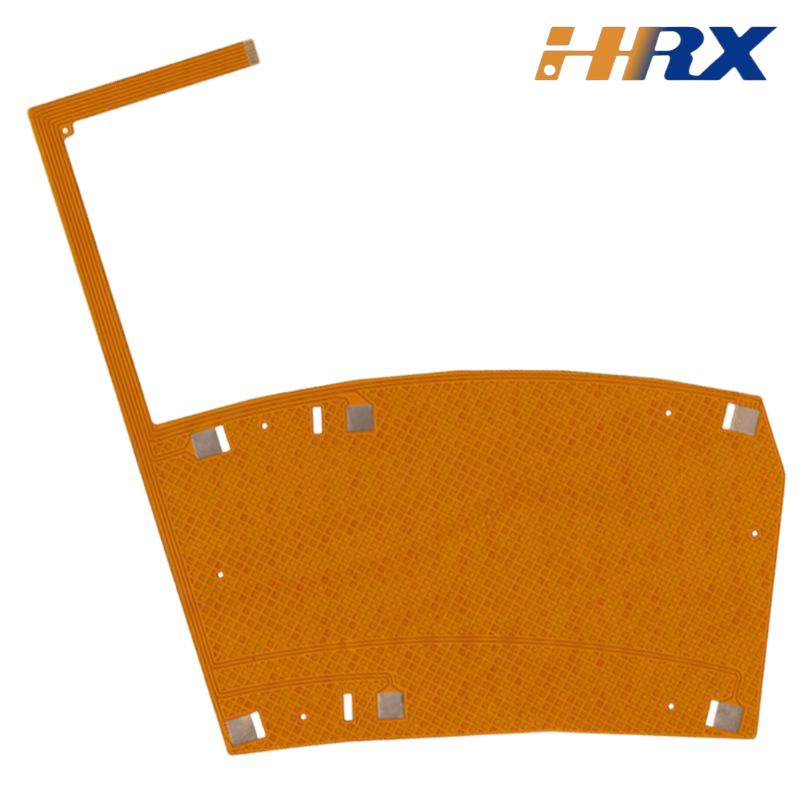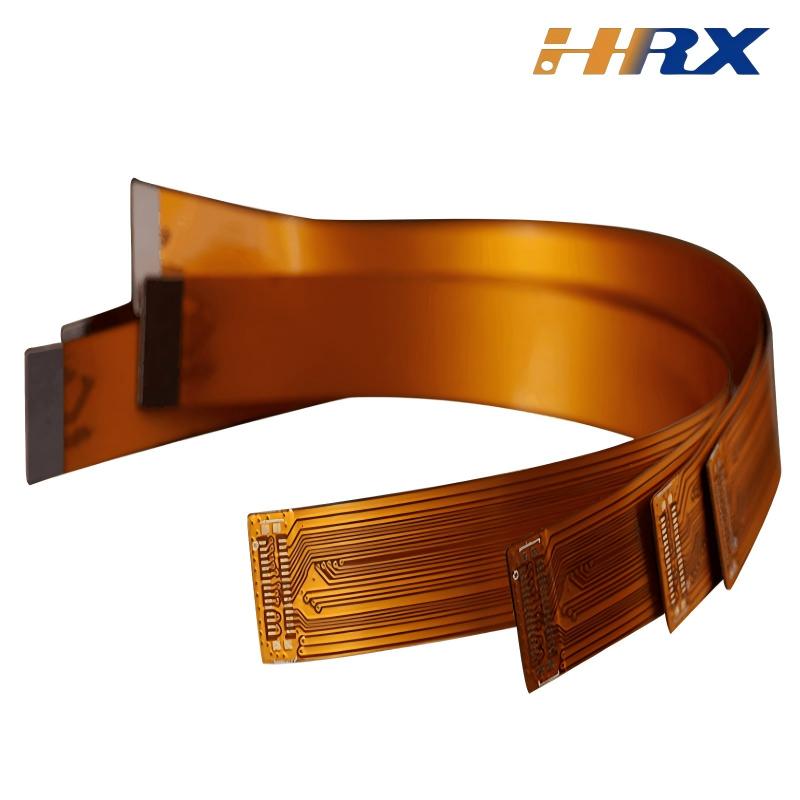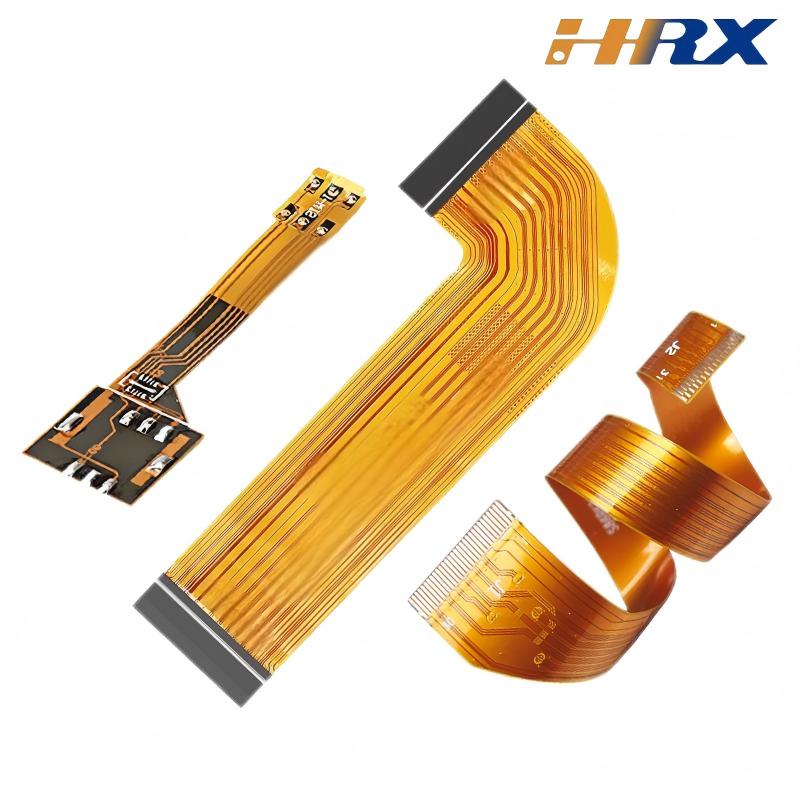Search
Exploring FPC Laser Cutting and Stamping Technologies: Precision, Efficiency, and Innovation
- Jul 01,2025
-
Share
In the rapidly advancing realm of electronics manufacturing, Flexible Printed Circuits (FPCs) have become an indispensable cornerstone, facilitating the creation of compact, lightweight, and highly flexible electronic devices. Among the plethora of manufacturing methodologies employed in FPC production, laser cutting and stamping technologies have emerged as frontrunners, owing to their distinctive capabilities and profound contributions to the industry. These techniques are not only crucial for meeting the stringent demands of modern electronics but also play a pivotal role in driving innovation in FPC manufacturing.

Laser Cutting Technology: Unparalleled Precision and Flexibility
Laser cutting technology has brought about a paradigm shift in the FPC manufacturing process, especially in applications that demand ultra-high precision and complex geometries. Distinguished from traditional mechanical cutting methods, laser cutting operates on a non-contact principle, eliminating the risk of stress-induced deformation and ensuring the integrity of the FPC circuit board. This non-invasive approach enables the execution of intricate and highly accurate cuts, making it possible to produce FPCs with fine-pitch traces, micro-vias, and tight tolerances, which are essential for high-density interconnect (HDI) applications.
One of the key advantages of laser cutting lies in its remarkable versatility in handling a wide spectrum of materials. It can proficiently process materials such as polyimide, which is renowned for its excellent thermal stability and mechanical strength, and polyester, a cost-effective option commonly used in consumer electronics. The laser beam can be meticulously controlled to cut through these substrates with minimal heat-affected zones (HAZs), thereby significantly reducing the potential for thermal damage to the surrounding circuitry. Additionally, the flexibility of laser cutting allows for the creation of custom-shaped FPCs, making it an ideal choice for rapid prototyping and small-batch production, where design iterations are frequent.
Another significant benefit of laser cutting is its high-speed and automated nature. The advanced motion control systems integrated into laser cutting machines enable rapid and continuous cutting of multiple FPCs, substantially reducing production lead times and costs. Moreover, laser cutting can be seamlessly integrated with other critical manufacturing processes, such as electroless plating for metal deposition, and die bonding for component attachment, creating a streamlined and highly efficient production workflow. This integration is particularly important in the production of FPCs for surface mount technology (SMT) applications, where precise alignment and high assembly accuracy are required.
Stamping Technology: High-Volume Production and Cost-Effectiveness
While laser cutting excels in precision and flexibility, stamping technology offers unique advantages, especially in high-volume production environments. Stamping involves the use of custom-designed dies to cut, shape, and form FPC materials, resulting in consistent and repeatable parts. This method is highly efficient for manufacturing large quantities of FPCs with relatively simple geometries, as it can process multiple parts in a single stroke, significantly increasing production throughput.
Cost-effectiveness is one of the primary hallmarks of stamping technology. Once the die is fabricated, the production process can be fully automated, reducing labor costs and enhancing overall productivity. Additionally, stamping can perform multiple operations, such as cutting, embossing, and bending, in a single setup, eliminating the need for multiple manufacturing steps and reducing the overall production time. This multi-functional capability makes stamping a preferred choice for applications where cost and production efficiency are of utmost importance, such as in the automotive and consumer electronics industries.
Stamping technology also demonstrates remarkable versatility in handling various materials, including metals and engineering plastics. This adaptability makes it suitable for a wide range of applications, from the production of simple flex circuits for wearable devices to more complex FPCs used in automotive electronics. However, it is important to note that the design complexity of the FPC is somewhat limited by the physical constraints of the stamping die, and intricate designs may require additional post-processing steps.
The Synergy of Laser Cutting and Stamping
The combination of laser cutting and stamping technologies represents a powerful synergy, offering a comprehensive solution for FPC manufacturing. By capitalizing on the precision and flexibility of laser cutting and the high-speed and cost-effectiveness of stamping, manufacturers can achieve optimal production efficiency, superior product quality, and enhanced design flexibility.
In this hybrid manufacturing approach, laser cutting is typically employed for the initial cutting of the FPC material, creating the basic shape and intricate features. This step is crucial for producing FPCs with complex geometries, fine details, and high-precision components, which are often required in advanced electronic devices. Once the initial cutting is completed, stamping is used to finish the parts, trimming excess material, and forming the final shape with high precision. This two-step process not only ensures the accuracy of the FPC but also improves the overall production efficiency.
The integration of these two technologies also enhances the flexibility of the manufacturing process, allowing manufacturers to quickly adapt to changing design requirements. Whether it is a small-batch production of custom-designed FPCs or a large-scale production of standardized components, the combined approach can handle a wide range of production volumes and design complexities. Moreover, this hybrid method can significantly reduce material waste, as laser cutting can be used to optimize the nesting of FPCs on the material sheet, thereby maximizing material utilization.
Shenzhen Huaruixin Electronics Co., Ltd.: A Global Leader in FPC Manufacturing
Shenzhen Huaruixin Electronics Co., Ltd. stands at the forefront of the global FPC manufacturing industry, offering comprehensive design, development, and manufacturing services for FPCs, PCBs, and Rigid-Flex Printed Boards. With a world-class manufacturing facility equipped with the latest state-of-the-art equipment and a team of highly skilled engineers, the company is committed to adopting and implementing the most advanced manufacturing technologies, including laser cutting and stamping.
At Shenzhen Huaruixin Electronics, the integration of laser cutting and stamping technologies is a core strategy for delivering high-quality FPC products that meet the diverse and demanding requirements of its global customer base. The company's laser cutting systems are equipped with advanced features, such as high-resolution vision systems for precise alignment, and real-time power control for consistent cutting quality. Meanwhile, its stamping dies are designed and fabricated using the latest CAD/CAM technologies, ensuring the production of high-precision and high-quality parts.
The company's unwavering commitment to innovation and continuous improvement is evident in its substantial investment in research and development. Shenzhen Huaruixin Electronics is constantly exploring new materials, such as advanced flexible substrates with improved electrical and mechanical properties, and novel manufacturing processes, such as additive manufacturing techniques for FPCs. By staying at the forefront of technological advancements, the company is able to provide its customers with cutting-edge FPC solutions that offer a competitive edge in the market.
Conclusion
In conclusion, laser cutting and stamping technologies are integral to the modern FPC manufacturing landscape, offering a wide range of benefits that contribute to the production of high-quality, reliable, and cost-effective FPC products. The synergy of these two technologies, coupled with the expertise and capabilities of leading manufacturers like Shenzhen Huaruixin Electronics Co., Ltd., has the potential to drive further advancements in the FPC industry.
If you have any FPC project requirements, whether it is for high-precision medical devices, advanced automotive electronics, or innovative consumer products, we invite you to contact Shenzhen Huaruixin Electronics Co., Ltd. Our team of experts is ready to provide you with customized solutions tailored to your specific needs, from design optimization to mass production. You can visit our website at www.hrxfpc.com to explore our comprehensive range of products and services in detail or send us an email at sales@hrxfpc.com to initiate a technical discussion. We look forward to the opportunity to collaborate with you and contribute to the success of your projects.

Let’s talk! We’ll provide the perfect solution for you!
-
 Huaruixin Electronics mainly produces printed circuit boards as the core business, to provide customers with one-stop solutions for FPC/PCB production, components sourcing and Assembly.
Huaruixin Electronics mainly produces printed circuit boards as the core business, to provide customers with one-stop solutions for FPC/PCB production, components sourcing and Assembly. - WHAT WE DO — PCB Design Solutions — Flex PCB Production — Components Sourcing — FPC&PCB Assembly
- PRODUCTS — Single Sided Flexible Circuits — Double Sided Flexible Circuits — Multilayer Flexible Cirucits — Rigid-Flex Circuits — FPC Assembly — PCB Assembly
- CAPABILITY — FPC Capability — Rigid-Flex Capability — PCB Capability — Assembly Capability
- Copyright © 2024 Shenzhen Huaruixin Electronics Co., Ltd. All Rights Reserved.
- Design By BONTOP


